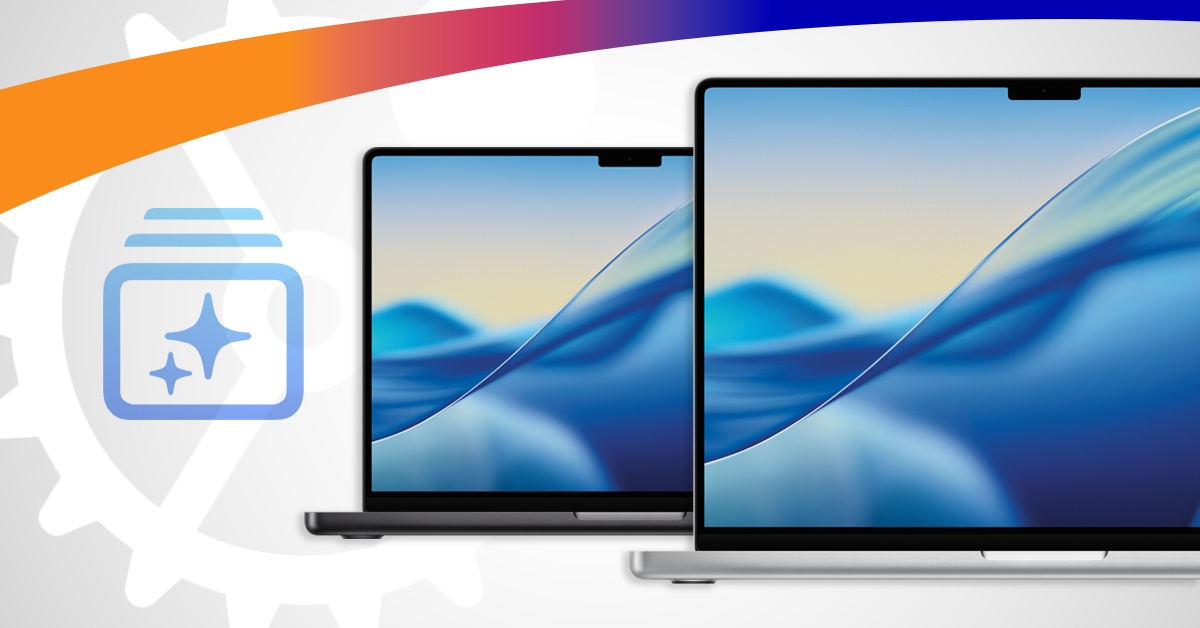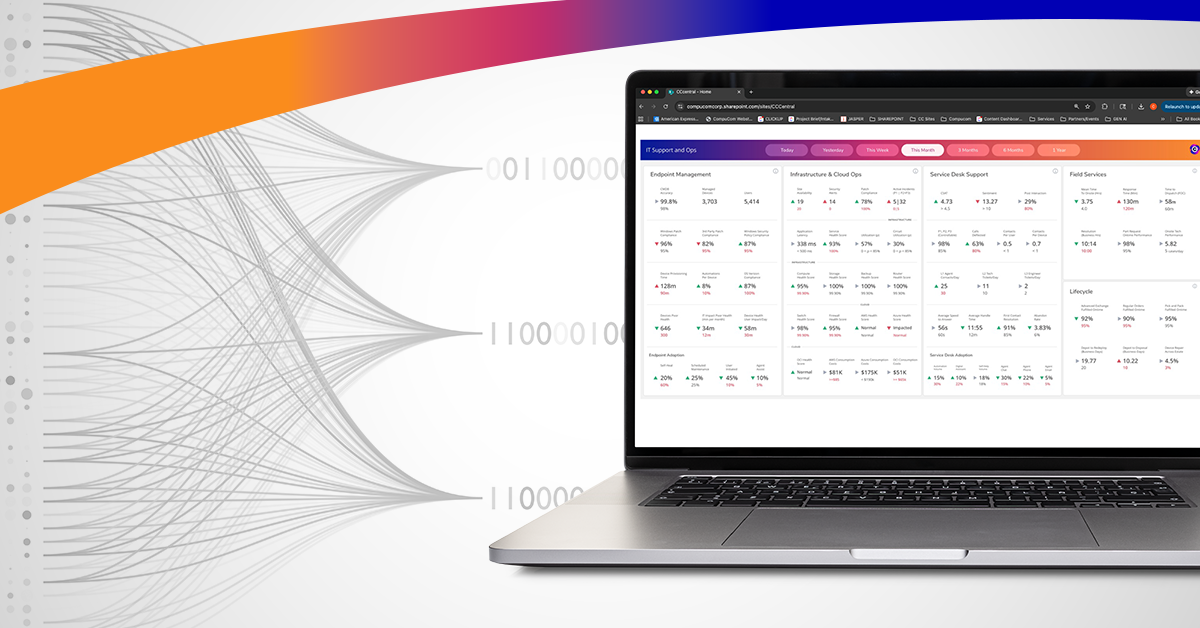- Endpoint Management


Emma Mak • Staff Writer
Just like putting off regular vehicle maintenance can leave you stranded on the side of the road — technical debt, the implied cost of future rework due to choosing an easy, immediate solution can leave you watching the competition pass you by. The full weight of “outdated” and “legacy” systems becomes even more apparent once companies embark on digital transformation journeys.
So, how can technical debt be kept under control? And how can IT leaders use managed IT services to overcome the burden of technical debt, freeing the company to focus on growth and innovation?
Using Managed IT Services to Reduce Technical Debt
“Technical debt is like dark matter: you know it exists, you can infer its impact, but you can’t see or measure it. Product delays, hidden risks, spiraling costs, and even engineers leaving in frustration are all common symptoms.”
McKinsey
Technical debt can manifest in various forms in an IT landscape. Managed IT services can help customers reduce technical debt in the following areas:
Security and Compliance
Technical debt in security and compliance poses significant risks. Insecure platforms, delayed patches, and misaligned controls can expose businesses to cyberthreats. Compliance debt, on the other hand, includes deficits in adhering to evolving regulations, leading to potential legal consequences.
Infrastructure
Deferred investments in hardware and software upgrades often result in operational disruptions. Outdated infrastructure can lead to frequent outages, reduced productivity, and poor user experiences. Upgrading to current versions incurs both direct (licensing) and indirect (support) costs.
8 Tips for Staying Ahead of Technical Debt
A managed services provider (MSP) can help you manage technical debt effectively through the following:
- Investing in Modern Technology: Adopting modern technologies, such as cloud-based solutions, reduces the burden of technical debt. By leveraging advanced infrastructure and regular updates, businesses can stay ahead of the curve and avoid the pitfalls of outdated systems. Device as a Service (DaaS) is a cost-effective way to ensure your employees can access up-to-date devices.
- Proactive Monitoring and Maintenance: Continuous monitoring and maintenance of your IT infrastructure enables proactive identification of potential issues, preventing them from escalating into costly problems.
- Regular Updates and Patches: Ensuring your systems are current is crucial in managing technical debt. Modern Device Management services handle regular updates and patches, making devices easier to support, minimizing vulnerabilities, and ensuring compliance with the latest standards.
- Strategic Planning and Consulting: Strategic planning and consulting services help businesses align their IT strategies with their overall goals. This holistic approach ensures that investments in technology are optimized and aligned with business objectives.
- Cloud Migration and Management: Migrating to cloud-based solutions can significantly reduce technical debt. Managed IT services facilitate seamless cloud migration and provide ongoing management, ensuring your systems remain scalable, secure, and up-to-date.
- Expert Curation and Support: Having access to a team of experts who manage and monitor your IT environment, along with vendor-neutral guidance for technology sourcing, enables a proactive approach. This ensures that potential issues are identified and addressed before they escalate, reducing the risk of accumulating technical debt.
- Cost Efficiency: Outsourcing IT management to a specialized provider can be more cost-effective than maintaining an in-house team. Managed IT services offer scalable solutions, allowing businesses to pay for what they need, when they need it, without the overhead of full-time staff.
- Enhanced Security and Compliance: Managed IT service providers implement stringent security measures and stay updated with the latest compliance requirements. This reduces the risk of security breaches and ensures that your business complies with industry regulations.
Tackle Technical Debt Head-On with Compucom
Technical debt can be a significant obstacle for enterprise organizations, but it can be managed effectively with the right strategy and tools. Compucom’s Technology Sourcing, Modern Device Management, and Professional Services solutions provide IT leaders with the resources and expertise needed to tackle technical debt head-on.
Don’t let technical debt prevent your enterprise from reaching its full potential – contact Compucom and take the first step towards a streamlined, future-ready IT environment.
RecenT

The Mac Management Playbook: 8 Steps to Deployment at Scale

Full Lifecycle, Full Visibility: Maximizing the Value of Mac in the Enterprise

Mac in the Enterprise — Myth vs. Reality: Debunking the Top Barriers to Adoption

Maturity Assessments Set a Clear Path to IT Modernization

Opportunity in Uncertainty: Leveraging Data for Fearless Decision-Making

Opportunity in Uncertainty: Turning 6 Top IT Challenges into Strategic Advantages
TOPICS
8 Practical Tips for Navigating Technical Debt
- Endpoint Management

Emma Mak • Staff Writer
Just like putting off regular vehicle maintenance can leave you stranded on the side of the road — technical debt, the implied cost of future rework due to choosing an easy, immediate solution can leave you watching the competition pass you by. The full weight of “outdated” and “legacy” systems becomes even more apparent once companies embark on digital transformation journeys.
So, how can technical debt be kept under control? And how can IT leaders use managed IT services to overcome the burden of technical debt, freeing the company to focus on growth and innovation?
Using Managed IT Services to Reduce Technical Debt
“Technical debt is like dark matter: you know it exists, you can infer its impact, but you can’t see or measure it. Product delays, hidden risks, spiraling costs, and even engineers leaving in frustration are all common symptoms.”
McKinsey
Technical debt can manifest in various forms in an IT landscape. Managed IT services can help customers reduce technical debt in the following areas:
Security and Compliance
Technical debt in security and compliance poses significant risks. Insecure platforms, delayed patches, and misaligned controls can expose businesses to cyberthreats. Compliance debt, on the other hand, includes deficits in adhering to evolving regulations, leading to potential legal consequences.
Infrastructure
Deferred investments in hardware and software upgrades often result in operational disruptions. Outdated infrastructure can lead to frequent outages, reduced productivity, and poor user experiences. Upgrading to current versions incurs both direct (licensing) and indirect (support) costs.
8 Tips for Staying Ahead of Technical Debt
A managed services provider (MSP) can help you manage technical debt effectively through the following:
- Investing in Modern Technology: Adopting modern technologies, such as cloud-based solutions, reduces the burden of technical debt. By leveraging advanced infrastructure and regular updates, businesses can stay ahead of the curve and avoid the pitfalls of outdated systems. Device as a Service (DaaS) is a cost-effective way to ensure your employees can access up-to-date devices.
- Proactive Monitoring and Maintenance: Continuous monitoring and maintenance of your IT infrastructure enables proactive identification of potential issues, preventing them from escalating into costly problems.
- Regular Updates and Patches: Ensuring your systems are current is crucial in managing technical debt. Modern Device Management services handle regular updates and patches, making devices easier to support, minimizing vulnerabilities, and ensuring compliance with the latest standards.
- Strategic Planning and Consulting: Strategic planning and consulting services help businesses align their IT strategies with their overall goals. This holistic approach ensures that investments in technology are optimized and aligned with business objectives.
- Cloud Migration and Management: Migrating to cloud-based solutions can significantly reduce technical debt. Managed IT services facilitate seamless cloud migration and provide ongoing management, ensuring your systems remain scalable, secure, and up-to-date.
- Expert Curation and Support: Having access to a team of experts who manage and monitor your IT environment, along with vendor-neutral guidance for technology sourcing, enables a proactive approach. This ensures that potential issues are identified and addressed before they escalate, reducing the risk of accumulating technical debt.
- Cost Efficiency: Outsourcing IT management to a specialized provider can be more cost-effective than maintaining an in-house team. Managed IT services offer scalable solutions, allowing businesses to pay for what they need, when they need it, without the overhead of full-time staff.
- Enhanced Security and Compliance: Managed IT service providers implement stringent security measures and stay updated with the latest compliance requirements. This reduces the risk of security breaches and ensures that your business complies with industry regulations.
Tackle Technical Debt Head-On with Compucom
Technical debt can be a significant obstacle for enterprise organizations, but it can be managed effectively with the right strategy and tools. Compucom’s Technology Sourcing, Modern Device Management, and Professional Services solutions provide IT leaders with the resources and expertise needed to tackle technical debt head-on.
Don’t let technical debt prevent your enterprise from reaching its full potential – contact Compucom and take the first step towards a streamlined, future-ready IT environment.
Recent Blogs

The Mac Management Playbook: 8 Steps to Deployment at Scale

Full Lifecycle, Full Visibility: Maximizing the Value of Mac in the Enterprise

Mac in the Enterprise — Myth vs. Reality: Debunking the Top Barriers to Adoption

Maturity Assessments Set a Clear Path to IT Modernization

Opportunity in Uncertainty: Leveraging Data for Fearless Decision-Making




